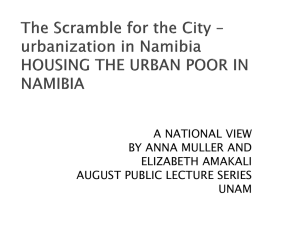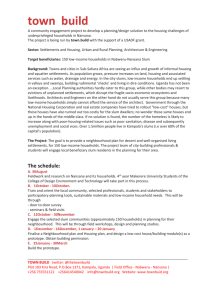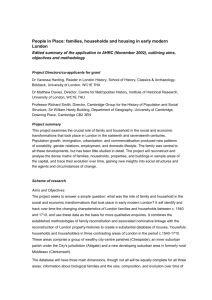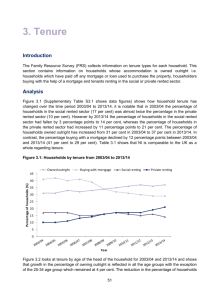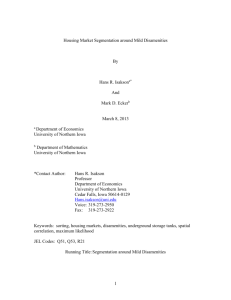Workshop 2 (060413) Minutes
advertisement
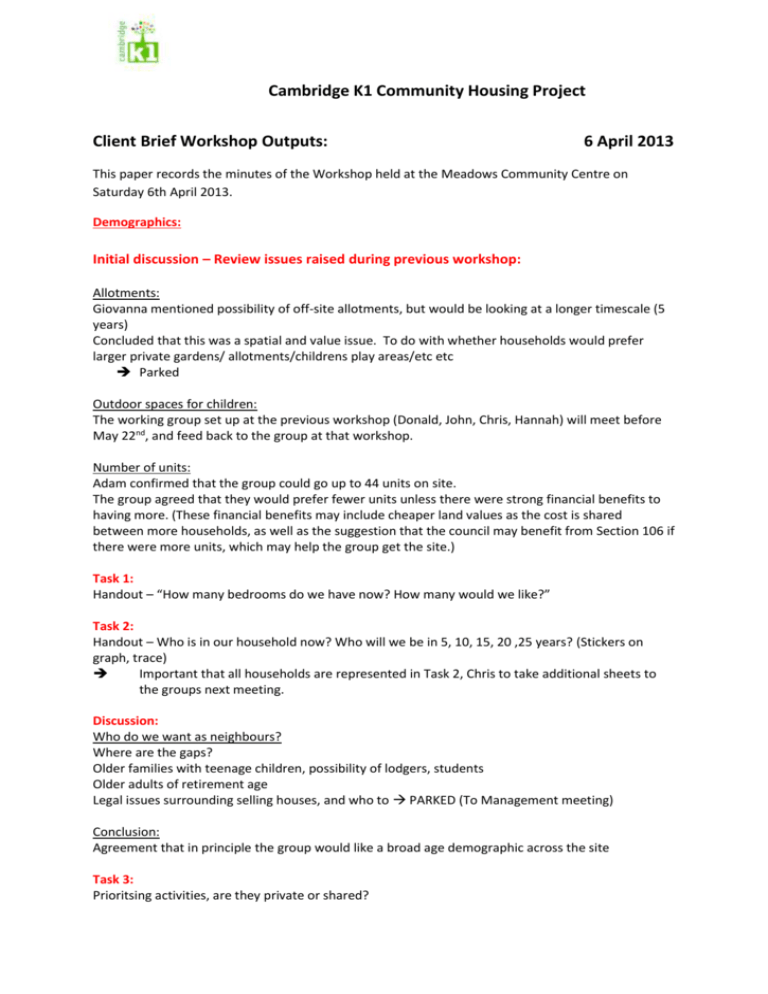
Cambridge K1 Community Housing Project Client Brief Workshop Outputs: 6 April 2013 This paper records the minutes of the Workshop held at the Meadows Community Centre on Saturday 6th April 2013. Demographics: Initial discussion – Review issues raised during previous workshop: Allotments: Giovanna mentioned possibility of off-site allotments, but would be looking at a longer timescale (5 years) Concluded that this was a spatial and value issue. To do with whether households would prefer larger private gardens/ allotments/childrens play areas/etc etc Parked Outdoor spaces for children: The working group set up at the previous workshop (Donald, John, Chris, Hannah) will meet before May 22nd, and feed back to the group at that workshop. Number of units: Adam confirmed that the group could go up to 44 units on site. The group agreed that they would prefer fewer units unless there were strong financial benefits to having more. (These financial benefits may include cheaper land values as the cost is shared between more households, as well as the suggestion that the council may benefit from Section 106 if there were more units, which may help the group get the site.) Task 1: Handout – “How many bedrooms do we have now? How many would we like?” Task 2: Handout – Who is in our household now? Who will we be in 5, 10, 15, 20 ,25 years? (Stickers on graph, trace) Important that all households are represented in Task 2, Chris to take additional sheets to the groups next meeting. Discussion: Who do we want as neighbours? Where are the gaps? Older families with teenage children, possibility of lodgers, students Older adults of retirement age Legal issues surrounding selling houses, and who to PARKED (To Management meeting) Conclusion: Agreement that in principle the group would like a broad age demographic across the site Task 3: Prioritsing activities, are they private or shared? Cambridge K1 Community Housing Project Discussion: Distribution of house types Options for either Putting all 1 beds together on site, all 2 beds together, 3 beds, 4 beds etc OR Mixing house types up. Issues regarding energy efficiency, beneficial to have all flats together, terraced houses etc. But this could lead to noise issues Katie confirmed that it must be assumed that noise issues in terraced houses will not be an issue and all houses would be energy efficient whatever typology they followed as they will have to be designed to meet building regulations at a minimum. Must ensure performance is met during the construction process. Typology of a 3 storey terrace with 2 separate access so option to rent one floor. – Ownership issues discussed. Agreement that in principle prefer mixed (As long as the site has some coherence aesthetically. Importance of visiting other developments discussed with two examples – Morton Hall Estate, Bury St Edmunds and Impington Lane.) Parked. Discussion: Issues covered this meeting (spreadsheet) Resident composition (diversity of householder types, ages, incomes) Agreed- Incomes not discussed. Rented: General acceptance of rooms to let. Will there be units for rent available? - A potential way to target the groups identified as “missing” during Task 2. If so, where would this rental market come from? There are unlikely to be buy to lets within the development but residents may move away for work for shorter periods of time, during which they would like to rent out their house. As a way for interested households to try the cohousing development before buying in – beneficial to existing households as well. This could be accommodated within the common house. However a possible negative impact on the sense of the community. Parked to legal working group. For the purpose of the design it will be assumed that any units to rent would be the same as the other units. Doing something different in terms of demographics “The K1 development should learn from previous co-housing schemes as well as respond to things unique to this group” (previous workshop) – should also respond to things unique to Cambridge… e.g. Cambridge as a University town with academics coming, potentially with families, to live in the area before moving on again in a few years. These people may have a lot to bring to the community. Not agreed, parked along with “rented.” Distribution of house type: Agreed that in principle house types should be mixed. Number of homes: More information needed Would like to have more of an idea of the spatial implications of more units. Cambridge K1 Community Housing Project Would like to know whether the price for the land (the major expense) goes up or down if there are more houses (reduced land cost but Section 106 requirements.) Would like to know how the number of units effects build costs with economies of scale. Agreed that they would only have more units if finances necessitate. Conclusion: It was noted that the parking issue is essential to some households. It would be ideal to have bathrooms within the common house that can be shut off to become ensuites to the bedrooms. Would like the opportunity to visually/spatially test ideas that come up in these workshops – Jim ensures that this will happen, using the site model at future workshops. Conclusion from the Post-It exercise should be that actually we only really need flexible space. Circulate activities to those not present at workshops for comment. Management and Maintenance working group to report back at the next meeting, at CAR, Wednesday 17th April. Contact details: www.cambridge-k1.co.uk or info@cambridge-k1.co.uk or call Adam Broadway 07817 888448



